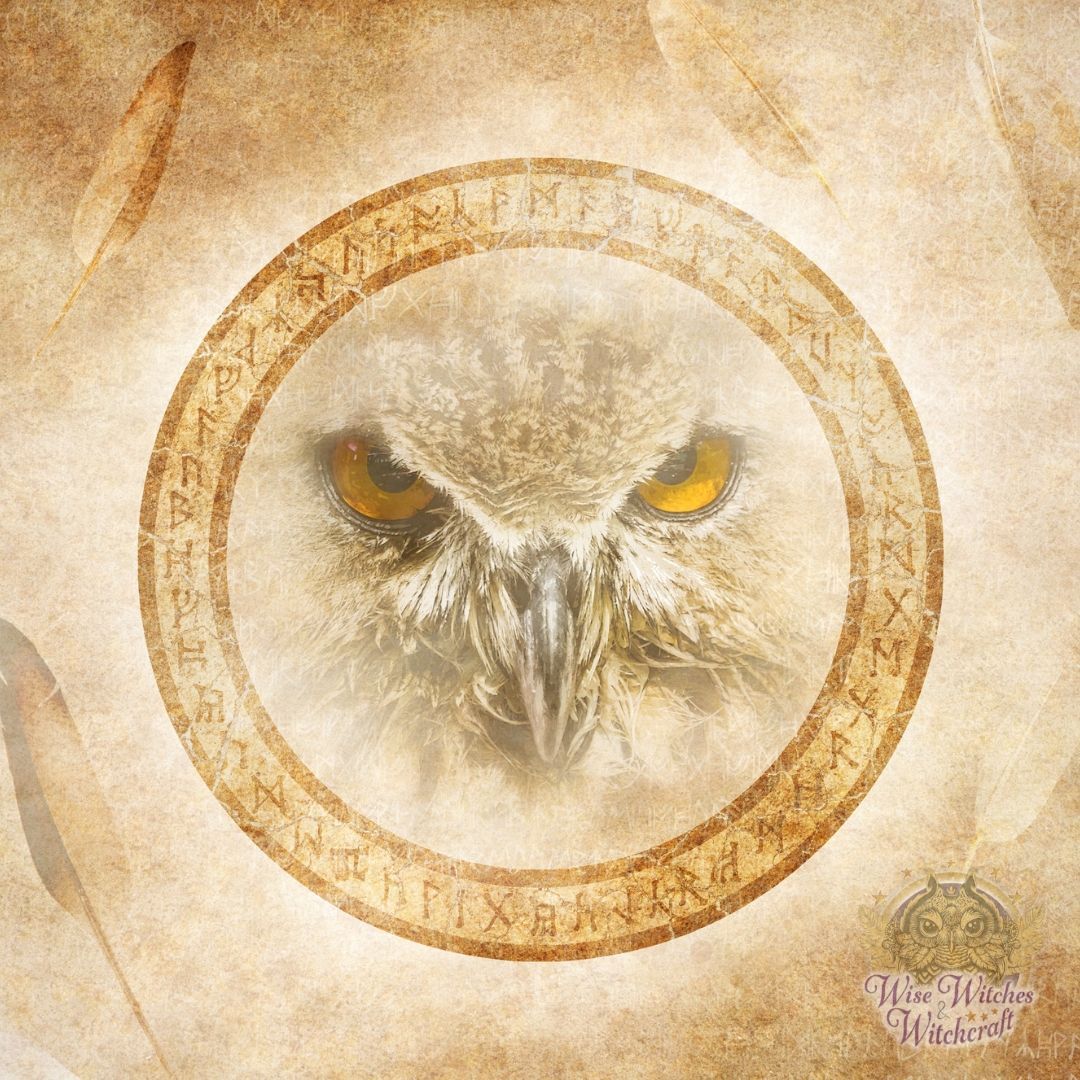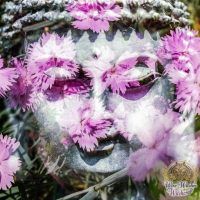Animism in Magic: Regional and Nature Spirits

“Regard heaven as your father, earth as your mother, and all things as your brothers and sisters.”
− Oracle of Atsuta
Animism is among one of the earliest forms of religious expression. In ancient times people believed that spirits existed in all things, great and small. Animals, rocks and crystals, trees, the wind, insects, the waves−each, and many more, were powerful entities that could be contacted and appeased for a person’s or tribe’s betterment. For example, a warrior might paint himself or herself with the image of a butterfly to elude the enemy. The butterfly was considered very evasive and puzzling; the body painting evoked those attributes in a type of partial possession or internalization of the butterfly spirit.
As time wore on the veneration of the natural world remained, changing only slightly with regional and cultural transformations. The way in which one honored the spirits became more elaborate, more socialized, but the heart remained: a deep, abiding knowingness that each living thing, and even the universe itself, has a vital essence. This essence is tied to the energy of Creation itself.
Animism Today

This animistic worldview is a little difficult for the modern-minded magical people to comprehend, let alone adapt to. It’s kind of hard to regard mosquitoes and roaches as part of our extended “tribe,” let alone a spirit to be honored. Nonetheless, if we are to awaken and empower the shaman within, we have to get past human-centric viewpoints. What happens in nature does not revolve around our needs and our wants.
Now there are extremes here. You modern animistic views don’t necessarily advocate feeling guilty if you step on an ant, or berating yourself each time you use bug spray. Instead, the idea is thinking and acting differently, one moment at a time. Stop your hurrying long enough to apologize to the ant’s spirit, for example . . . And next time choose a spray that’s herbal! With tenacity and practice, animistic attitudes can change our lives and, in turn, benefit the planet tremendously.
It’s understandable if, at first, Animism feels unfamiliar, but if you look around at modern practices you will discover hints of it everywhere. Do you know someone with a familiar with whom they communicate? Yep, that’s animism. Here are some other examples:
- Seeking out an animal spirit, totem or guide
- Invoking the powers of Earth, Air, Fire and Water for creating sacred space (as in Wicca)
- Mediating with a sacred stone in order to learn how to best use it in magic
- Talking to (or singing to) your magical plants so they grow fruitfully
- Hugging a tree
These actions and others like them represent those magical ripples running through time that include Animistic elements. You may not always know from where a custom originates, but a little exploration can be very spiritually enlightening.
Regional and Natural Spirits

Once we accept animism as having merit, we can use that awareness for recognizing and communing with various nature spirits. In reading the world’s mythology and lore, there is a fantastic variety of these creatures whose names, sizes, shapes, and appearances change depending on the culture and setting. Consequently, let’s look at things a little generically here.
Have you ever walked into a house and felt a presence that had a specific demeanor? Trodden down an old wooded path and sensed you weren’t alone? Rested beneath the boughs of a great tree and suddenly been aware of its life ebbing beneath and above you? If you answered yes to any of these questions, then you’ve already had your first tastes of a regional or nature spirit in a very subtle way.
Messages from Nature Spirits
Each place and thing has the potential for spirit habitation. In nature, these beings appear similar to the plant, water droplet, root or flower to which they’re attached, often acting as a guardian or that spot. Communing with the spirit of a place or living thing gives you access to a lot of good information:
- Why an area keeps experiencing a specific type of plant or animal sickness.
- How to help the area endure through a drought or other natural disasters.
- Where best to put up sacred sites, hold important gatherings, and the like.
- What types of plants and animals will thrive here, and what kinds need assistance for improved hardiness.
- When it’s best to sow, fertilize, and harvest various plants (couple this with moon or magical gardening techniques if you wish).
- What magical spell or rituals might benefit from enacting them here.
- How that living thing (flower, tree, grass, etc.) can be used in spiritual efforts most effectively.
- Who is welcome here (and more importantly, who is not).
Nature spirits have been known to be picky about their visitors. If you think of stories about fairies who blessed “good” humans and “taunted” bad ones with all manner of mischief, you get the idea.
Meeting a Nature Spirit through Meditation

There are two common ways in which you can meet a regional or nature spirit, the first being through trance journeys as the ancient Shamans used. The second is far easier – through a simple meditation. Sit and breathe deeply, facing the direction in which you feel the spirit resides. Allow your vision to blur; look at nothing in particular. Think about welcoming phrases like ‘greetings’ or maybe ‘can you show yourself?’ As you watch, a face or symbol might begin materializing in a rock, a hill, or whatever. This is the spirit saying “hello” right back at you!
Questions for a Regional or Nature Spirit
At this point, you may ask questions of the spirit, but keep it pertinent and respectful. Location and regional spirits can help heal entire communities if asked the right questions with the right intention. Don’t, for example, ask a mountain spirit how to solve a problem in the valley-it may not know that. Also, try to keep the conversation short. Spirits have other duties to attend to than talking to us.
Nature spirits don’t always use spoken words, by the way. They may communicate telepathically or give you mental images that convey a message or answer. Be open to the possibilities so you don’t miss something important.
Nature is BIG
During your discourse, some very large regional spirits can sometimes feel a bit overwhelming. The mountain spirit, for example, might wrap itself around you, or a cloud spirit might loom high and huge overhead. Don’t let this imagery frighten you. It’s simply an astral projection of that entity’s power and importance to the region.
When to Stop Communion
At some point in the meditation, you’ll notice your ability to concentrate waning or the clarity of communication diminishing. This is a good sign that it’s time to stop. Thank the spirit for its aid, and ask if it has a name by which you can call on it again. Then return to normal levels of awareness with a thankful heart for the knowledge you received.
Showing Gratitude to Nature Spirits

You know how you folks would often take a bottle of wine with them when invited for dinner at someone’s house. This comes from a custom of giving offerings of thanks to Hearth Deities, also a kind of local spirit. The concept holds true when working with Nature Spirits. You can say thank you in various ways like:
- Leaving a crystal somewhere special.
- Pouring out mead or water into the land.
- Planting a seed or seedling.
- Providing food like sweetbread (enjoyed by the Fey in particular).
- Burning incense-like patchouli or primrose (both aligned with the Earth Element).
- Singing a song (trees don’t mind if you are out of tune).
The act of gratitude is really all about being thankful. These gestures won’t go unnoticed and begin building relationships between you and the nature spirits you encounter.
Adapted from “Shaman in a 9-5 World,” by Patricia Telesco. All rights reserved.




